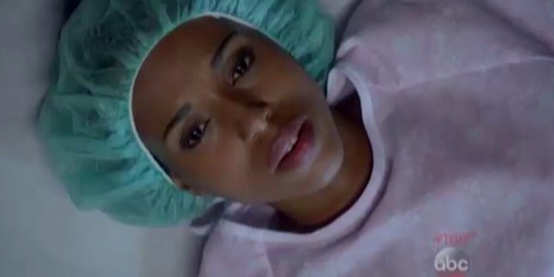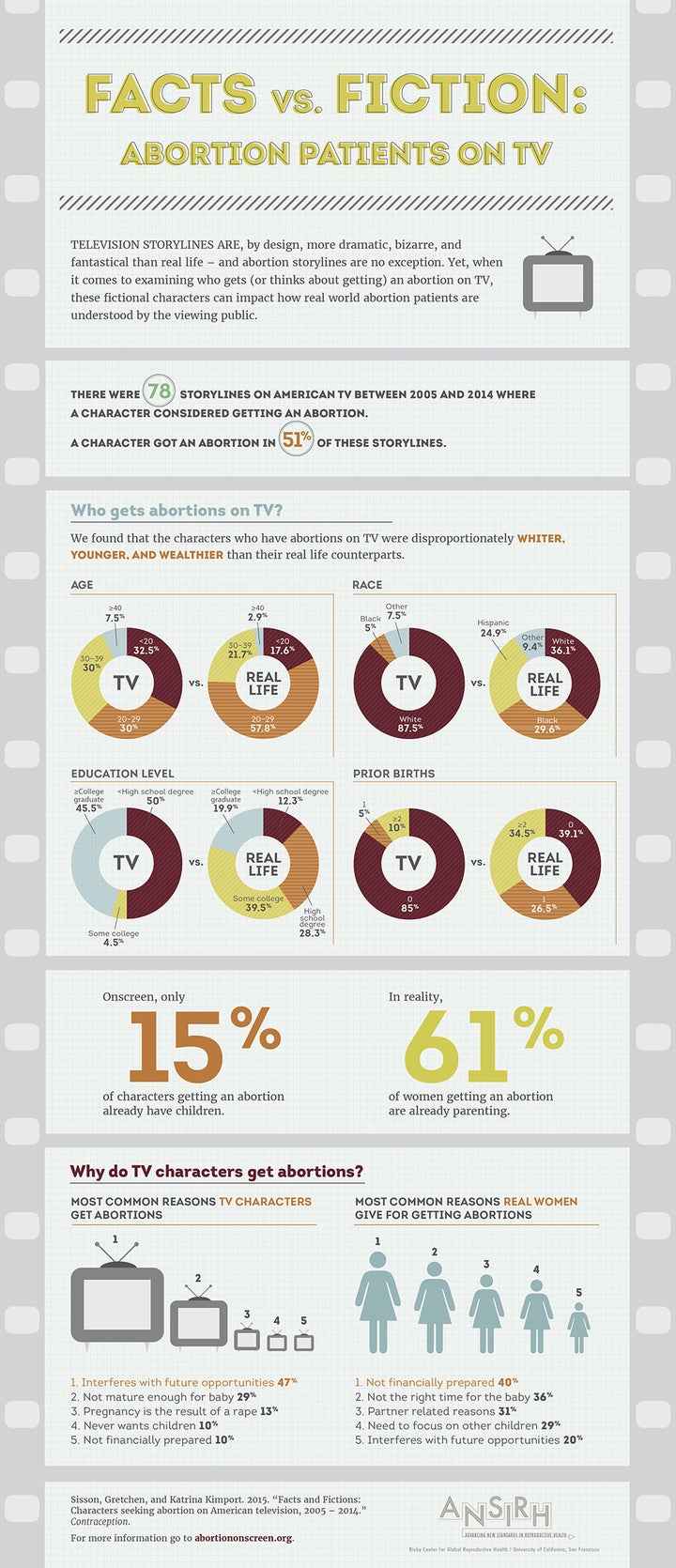
A new study shows that when it comes to abortion on the small screen, we still have a long way to go.
Researchers Gretchen Sisson and Katrina Kimport examined depictions of abortion on U.S. television shows across cable and network TV from 2005 to 2014. Their findings, published in the journal Contraception, reveal that the demographics of characters who consider and have abortions on most shows do not quite reflect the reality of women who actually get abortions in real life.
As shown in the graphic below, there were 78 storylines on American television between 2005 and 2014 where a character considered having an abortion. In 51 percent of those storylines, the character chose to move forward with the abortion. However, the majority of these fictional women were young, white, and rich -- despite the fact that statistically the majority of women who get abortions are black, Hispanic, and from poorer socioeconomic backgrounds.

And that's not the only gap between TV and reality when it comes to abortions.
"It's not just a function of different racial and socioeconomic demographics," Gretchen Sisson told The Huffington Post. "Most real women getting abortions are already mothers; their stories aren't often shown on television."
According to the study, only 15 percent of characters that got an abortion on TV already had children, while in reality, 61 percent of women who get abortions already have children.
Most indicative of the gap between fictional abortions and real life, though, are the reasons TV characters get abortions. Sisson and Kimport found that 47 percent of the TV characters who got abortions chose to do so because an unplanned pregnancy would interfere with future opportunities. While this certainly plays into many women's decisions to have abortions in the real world, 40 percent of women who have an abortion report doing so first and foremost because they are not financially able to raise a child.
Luckily, it's not all bad news. In the past year alone, there have been several small shifts towards representing abortion in a more realistic and diverse way on-screen, including Olivia Pope's guilt-free abortion on "Scandal," and Hope's medication abortion -- one of the first times this has been portrayed -- on Netflix's "Jessica Jones."
One could argue, of course, that because scripted television is by its very definition "fictional," the authenticity of depictions of abortion doesn't really matter. But as Sisson points out:
There is ample research evidence showing the entertainment television can influence public beliefs and knowledge, whether or not those stories are fantastical or bizarre. But it's important to understand that the abortion stories we're seeing aren't unrealistic on an individual level. There are over 1 million abortions every year in the US -- that means there were plenty of young white women getting abortions. They're just not getting 90 percent of abortions, like we see on television. The best way to make television more realistic is to diversify the stories being told, and make them reflective of a broader range of realities.
Abortion on the small (and big) screen helps to push the conversation forward, normalize a still very taboo topic, and de-stigmatize abortions and the women who have them.
Also on HuffPost:

